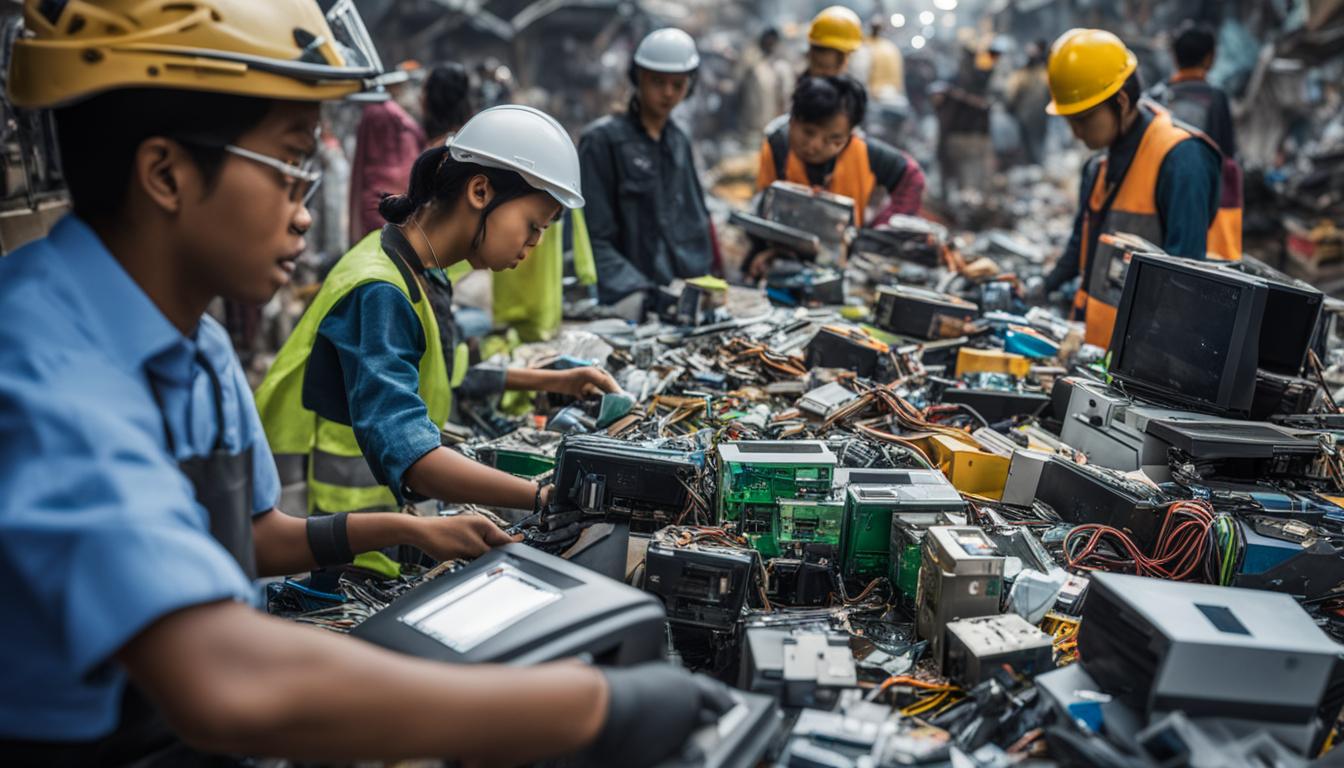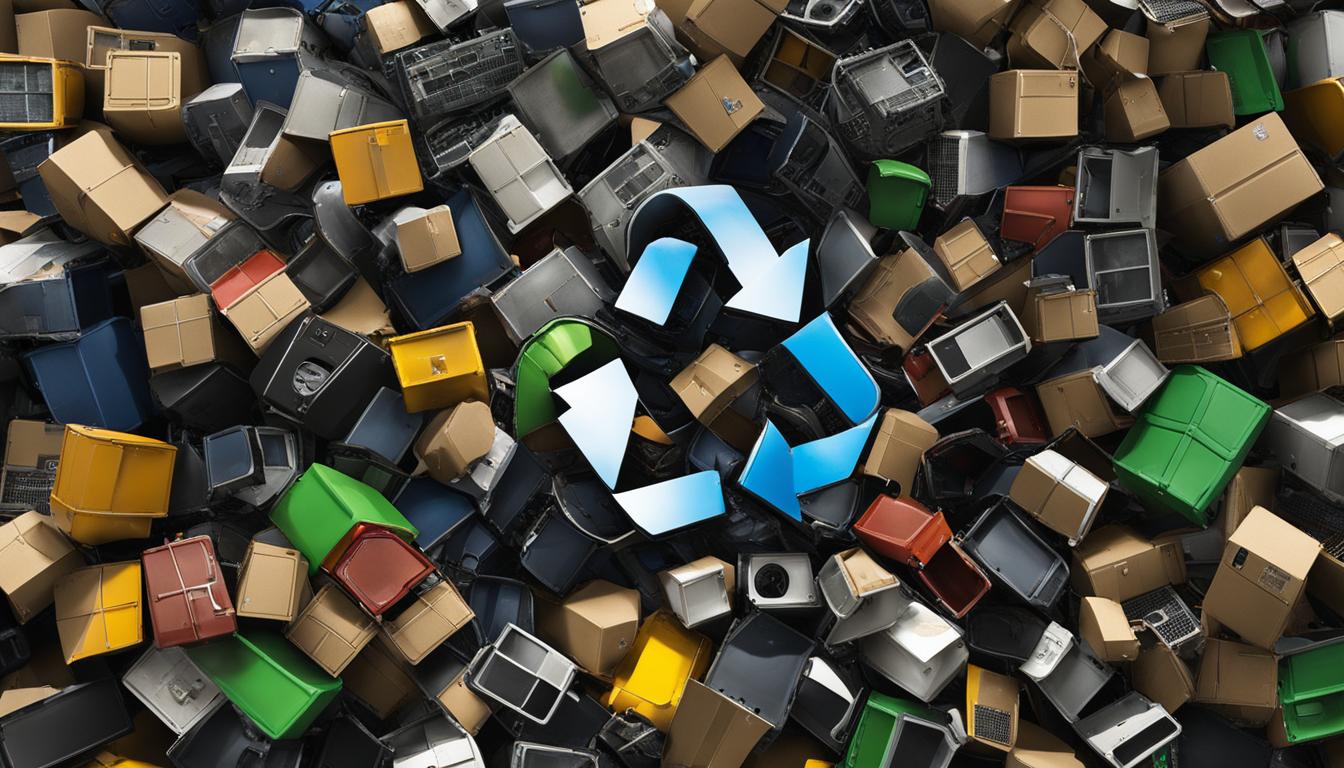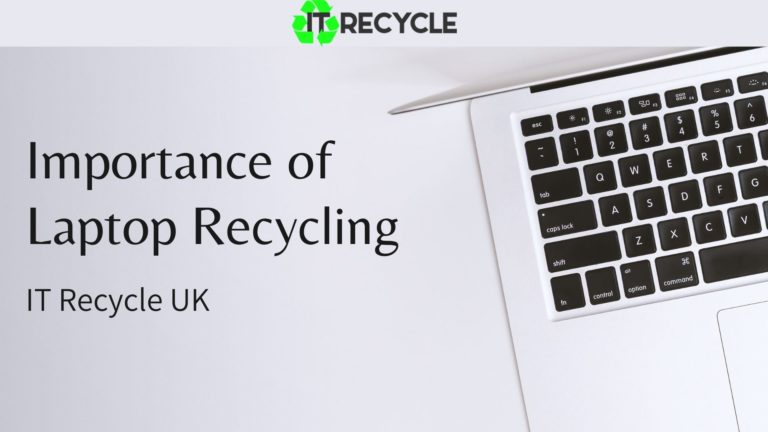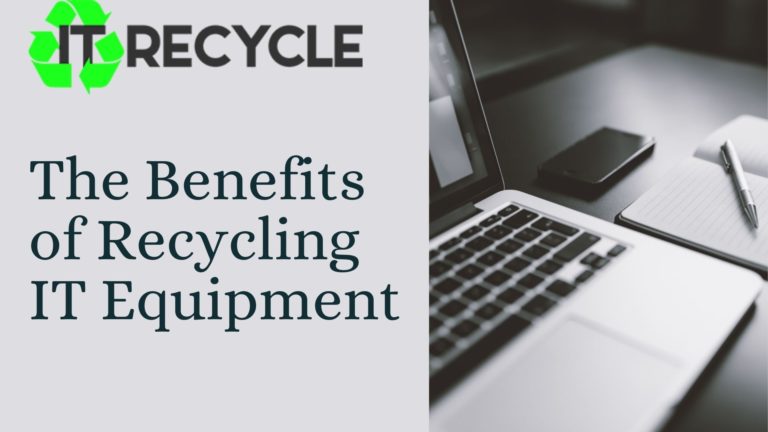Legislation Impacting IT Recycling Around the World
Electronic waste is a growing concern worldwide, with the total e-waste generated estimated at 41.8 million tonnes in 2014 and expected to rise to approximately 50 million tonnes by 2018. The e-waste stream is growing at a rate of 3-5% annually, three times faster than other waste streams. Various countries have implemented legislation to address this issue, including the European WEEE Directive, which aims to improve the collection and efficiency of recycling electronic waste. The directive also sets collection targets based on a fixed amount per inhabitant.
Key Takeaways
- IT recycling legislation is crucial in tackling the global problem of electronic waste.
- The European WEEE Directive sets collection targets and promotes efficient recycling practices.
- Proper e-waste management can help minimize the environmental impact of recycling.
- Compliance with IT waste disposal regulations is essential for responsible e-waste handling.
- Efficient and sustainable e-waste collection systems are necessary to achieve the goals set by legislation.
The Environmental Impact of E-Waste Recycling
E-waste recycling is crucial in minimizing the environmental impact of improper disposal and recycling practices. Many electronic devices contain toxic substances such as lead and mercury, which can have detrimental effects on the environment if not handled responsibly. To address this issue, responsible e-waste management regulations have been put in place to promote sustainable IT disposal guidelines and environmentally friendly IT disposal policies.
These regulations emphasize the proper dismantling, shredding, and separation of materials during the pre-processing stage of recycling. By implementing these practices, harmful substances can be safely removed and contained, reducing the risk of contamination to the air, soil, and water. Furthermore, the end-processing stage of recycling often employs pyro/hydro/bio metallurgical treatment methods, which help extract valuable metals and components while minimizing environmental harm.
By adhering to sustainable IT disposal guidelines and environmentally friendly IT disposal policies, the e-waste recycling industry can significantly reduce its carbon footprint and contribute to the preservation of the environment. Recycling electronic waste not only prevents hazardous substances from polluting the environment but also reduces the need for new metal production, conserving valuable resources and lowering energy consumption.
The Benefits of Responsible E-Waste Management
– Mitigates environmental pollution caused by toxic substances in electronic devices
– Reduces the demand for new metal production, conserving valuable resources
– Lowers energy consumption and carbon emissions associated with traditional mining and metal extraction
– Creates economic opportunities in the recycling industry through the recovery of valuable metals and components
Health Risks Associated with E-Waste Exposure
E-waste recycling activities, especially those conducted in informal sectors, can pose significant health risks. Exposure to toxic substances released during improper recycling can have adverse effects on human health, particularly for children and pregnant women. The International Labour Organization estimates that millions of women and child laborers working in the informal recycling sector may be at risk of e-waste exposure. Therefore, government regulations for IT recycling and compliance with IT waste disposal laws are crucial to ensure public health and safety benefits. These regulations aim to eliminate hazardous practices such as open burning, acid baths, and manual disassembly of equipment.
Proper handling of e-waste is essential to protect workers and the surrounding communities from the harmful effects of toxic substances. Government regulations for IT recycling require the use of safe and environmentally friendly methods for handling, dismantling, and recycling electronic waste. Compliance with these regulations ensures that proper precautions are taken to minimize exposure to hazardous substances and prevent contamination of air, soil, and water.
The health risks associated with e-waste exposure can manifest in various ways. Studies have shown that exposure to lead, mercury, cadmium, and other toxic substances found in e-waste can lead to respiratory, neurological, and developmental disorders. These substances can also have long-term effects on reproductive health and increase the risk of certain cancers. By implementing government regulations for IT recycling and ensuring compliance with IT waste disposal laws, we can protect the health and well-being of both workers and the general public.

The Importance of Government Regulations for IT Recycling
Government regulations play a vital role in addressing the health risks associated with e-waste exposure. These regulations establish guidelines and standards for the safe handling, transportation, and disposal of electronic waste. By enforcing compliance with IT waste disposal laws, governments can ensure that proper safety measures are in place throughout the e-waste recycling process.
“Improper recycling of e-waste can release hazardous substances into the environment, posing significant health risks. Government regulations are necessary to protect workers and the public from these dangers.”
Ensuring Public Health and Safety Benefits
Compliance with IT waste disposal laws not only protects the health and safety of individuals but also provides broader public health benefits. Proper e-waste recycling reduces the release of toxic substances into the environment, minimizing their impact on air, water, and soil quality. Safe recycling practices also prevent the contamination of natural resources and help create a healthier and more sustainable environment for future generations.
| Benefits of Government Regulations for IT Recycling |
|---|
| Protects workers from the health risks associated with e-waste exposure |
| Minimizes the release of toxic substances into the environment |
| Reduces the risk of respiratory, neurological, and developmental disorders |
| Preserves air, water, and soil quality |
| Creates a healthier and more sustainable environment |
The Economic Benefits of E-Waste Recycling
E-waste recycling not only contributes to environmental sustainability but also offers significant economic benefits. By recovering valuable metals from electronic waste, recycling reduces the need for new metal production, saving resources and reducing costs. Additionally, proper e-waste management helps to minimize the amount of material sent to landfills, resulting in reduced waste management expenses.
Regulations for IT recycling and compliance with IT waste disposal laws play a crucial role in unlocking these economic benefits. These regulations support the development of efficient and sustainable e-waste collection, recycling, and transportation systems. By creating a standardized and regulated framework, businesses in the recycling industry can streamline their operations, improve efficiency, and increase profitability.
Furthermore, the economic benefits of e-waste recycling extend beyond the recycling industry itself. As the demand for electronic waste recycling services grows, it generates job opportunities in various sectors, including collection, sorting, dismantling, and recycling. These job creations contribute to local economies, providing employment and income for communities.
Table: Economic Benefits of E-Waste Recycling
| Benefits | Description |
|---|---|
| Resource Conservation | Reduces the need for new metal production, saving resources and energy. |
| Cost Reduction | Minimizes waste management expenses and landfill costs. |
| Job Creation | Generates employment opportunities in e-waste collection, sorting, and recycling. |
| Local Economic Growth | Contributes to the growth of local economies through increased economic activity. |
By recognizing the economic benefits of e-waste recycling and implementing regulations for IT recycling, governments and organizations can create a more sustainable and prosperous future. Compliance with IT waste disposal laws and responsible e-waste management practices are essential for businesses and individuals to unlock these economic advantages while contributing to a cleaner and healthier environment.
Global Legislation and Initiatives
As the global issue of e-waste generation and disposal continues to grow, legislation and initiatives are being implemented around the world to address this pressing concern. These regulations aim to control the transboundary movement of hazardous e-waste, promote environmentally sound management, and restrict the use of hazardous substances in electronic equipment production.
The Basel Convention plays a crucial role in governing the international movement of hazardous wastes, including e-waste. It provides guidelines for the environmentally sound management of e-waste, ensuring that it is recycled and disposed of responsibly. The European Union has also taken significant steps in managing e-waste through the implementation of the WEEE Directive and the RoHS Directive. The WEEE Directive focuses on the collection and recycling of end-of-life electronics, while the RoHS Directive restricts the use of certain hazardous substances in the production of electrical and electronic equipment.
Various initiatives are working towards finding comprehensive solutions for the global e-waste problem. One such initiative is Solving the e-waste problem (SteP), which aims to develop sustainable strategies for e-waste management. SteP brings together researchers, policymakers, and industry experts to collaborate on finding innovative and efficient ways to collect, recycle, and dispose of e-waste. These initiatives are essential in driving progress towards efficient and sustainable e-waste collection, recycling, and transportation systems.
| Legislation/Initiative | Description |
|---|---|
| Basel Convention | An international treaty governing the transboundary movement of hazardous wastes, including e-waste. Provides guidelines for environmentally sound management of e-waste. |
| WEEE Directive | A European Union directive focusing on the collection and recycling of end-of-life electronics to reduce the environmental impact of e-waste. |
| RoHS Directive | A European Union directive that restricts the use of certain hazardous substances in the production of electrical and electronic equipment to minimize the environmental and health risks associated with e-waste. |
| Solving the e-waste problem (SteP) | An initiative that brings together experts from various fields to develop sustainable strategies for e-waste management, including efficient collection, recycling, and disposal methods. |
Efficient and sustainable e-waste collection, recycling, and transportation systems are crucial to achieving the goals set by these legislations and initiatives. By working together globally, we can combat the challenges posed by e-waste and create a more sustainable future for generations to come.
Conclusion
IT recycling legislation plays a crucial role in addressing the growing concern of electronic waste worldwide. Compliance with IT waste disposal laws and regulations is essential for businesses and individuals to meet their legal requirements and ensure responsible e-waste management.
By implementing efficient and sustainable e-waste collection and recycling practices, we can reduce the environmental impact of electronic waste and promote a circular economy. It is important for governments and organizations to continue working together to develop and enforce IT recycling legislation and encourage compliance to create a more sustainable future.
FAQ
What is the total amount of e-waste generated worldwide?
The total e-waste generated was estimated at 41.8 million tonnes in 2014 and is expected to rise to approximately 50 million tonnes by 2018.
How fast is the e-waste stream growing compared to other waste streams?
The e-waste stream is growing at a rate of 3-5% annually, which is three times faster than other waste streams.
What are the environmental impacts of improper e-waste recycling and disposal?
Improper recycling and disposal of e-waste can contaminate the air, soil, and water with toxic substances such as lead and mercury.
What are responsible e-waste management regulations?
Responsible e-waste management regulations aim to minimize the environmental impact of recycling by promoting sustainable IT disposal guidelines and environmentally friendly IT disposal policies.
What are the health risks associated with e-waste exposure?
Exposure to toxic substances released during improper e-waste recycling can have adverse effects on human health, particularly for children and pregnant women.
What is the role of government regulations in IT recycling?
Government regulations for IT recycling and compliance with IT waste disposal laws are crucial to ensure public health and safety benefits by eliminating hazardous practices and promoting responsible recycling.
What economic benefits does e-waste recycling provide?
E-waste recycling allows for the recovery of valuable metals and reduces the global demand for new metal production. It also helps to reduce costs associated with waste management.
What legislation exists to address the global issue of e-waste?
The Basel Convention controls the transboundary movement of hazardous wastes, the European Union has implemented the WEEE Directive and RoHS Directive, and various initiatives like Solving the e-waste problem (SteP) work towards developing solutions for the global e-waste issue.
Why is efficient and sustainable e-waste collection important?
Efficient and sustainable e-waste collection, recycling, and transportation systems are crucial to achieving the goals set by legislation and initiatives, and to promoting a more sustainable future.
How can individuals and businesses ensure responsible e-waste management?
Compliance with IT waste disposal laws and regulations is essential for individuals and businesses to meet their legal requirements. Implementing efficient and sustainable e-waste collection and recycling practices is also important.













